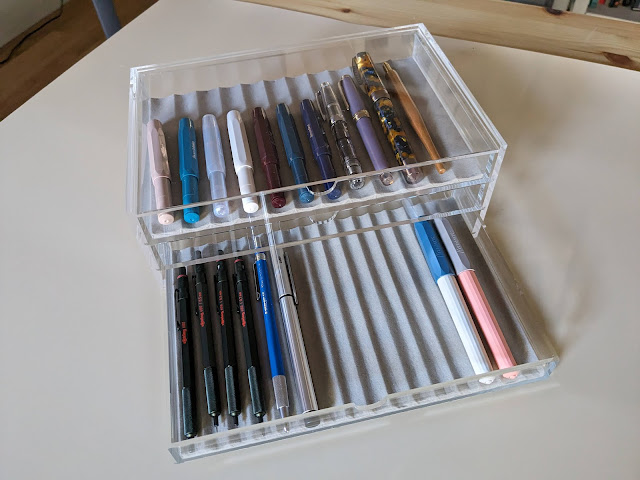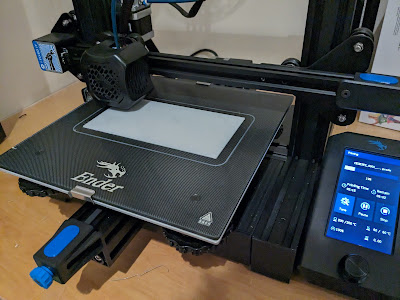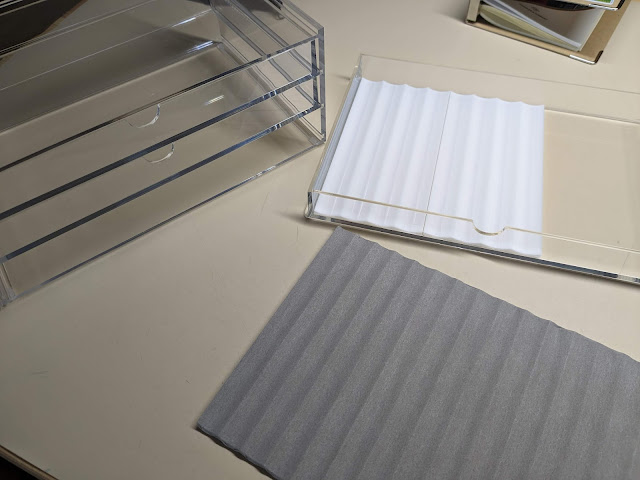Muji Fountain Pen Box
This was my first time attending the SF Pen Show. Also, it was my first Pen Show. Something in particular that got my attention was the beautiful Toyooka Craft fountain pen storage boxes. I'm not ready to spend that much on a storage solution for my pens yet, so I decided to try and find a cheaper way to store them.
A few weeks ago, I was in Portland and went to Muji. I found an Acrylic Storage box with the perfect size to store pens but no internal separation to keep the pens in a specific place. I thought it wouldn't be difficult to DIY a tray, so I got a box. (I can't find the box online, but this is the label.)
During the weekend, I started to search for pen trays or ways to make pen trays, and lucky me, someone had already solved my problem. MrNewt published a 3D file to print trays that specifically fit the Muji Box. The file can be found here Muji box - fountain pen tray divider by mrNewt - Thingiverse. I had to spend a while tinkering with my 3D printer because I had some issues the last time I used it. Once I got it in working condition, I started to print.
I got self-adhesive velvet at my local Daiso Japan store at $1.75 + tax. This velvet/felt is great because it's flexible and thin, which makes it easier to follow the curvature of the trays in the borders.
The 3D model is designed to be printed in 4 pieces to hold 16 pens per tray. Once I had the 4 pieces, I glued them together using super glue and applied the velvet fabric. I ensured the tray would fit the drawer before adding the velvet. This is a step I always recommend because 3D printing depends a lot on the configuration of your printer and the kind of filament you are using. Sometimes, the final print can be slightly larger than the design. In my case, it was, so I filed the excess and put the velvet.
My first tray was done, but the fountain pens fit too tight for my taste. I decided to keep it anyway to store my mechanical and ballpoint pens, which are thinner.
I have zero skills in making 3D designs or modifying an existing design. Still, I'm proficient in the use of Cura, which is the software that transforms the 3D design in a language my 3D printer can understand. I calculated how much I could expand the tray to fit in the drawer if I only printed 3 instead of 4. The answer is modifying the Y-axis to print at 132%, keeping X and Z at 100%.
After around 17 hours, I had the 3 modified pieces. They fit inside the drawer like a glove! It's time to add the velvet and check the result.
In the following photograph, the difference in the width of each cell is very noticeable. The Fountain pens have more room between them, and the box overall looks quite nice. As expected, the original cell width is more suitable for mechanical and ballpoint pens.
I don't know why the box is not in the online Muji store. There is another one available at the container store that might work because it has similar measurements. It's more expensive, but it has 5 drawers instead of 3.
I hope this helps someone else, and thanks to Eugen Borcan for sharing the design.
K.




.png)




Comments
Post a Comment